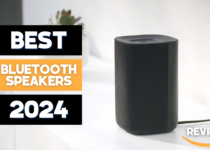The Best Drones for 2024
A premium drone can enhance the production value of a film project or provide a distinctive perspective for your travel vlog, not to mention the sheer enjoyment of flying them. Below are the leading drones that we’ve put to the test.
Even if you can’t find a practical reason to justify the purchase, it’s hard to deny the cool factor of drones. While some may be considered high-end tech toys, the models we showcase here are specifically designed for imaging and cinematic purposes, catering to projects of various scales. The good news is that drone technology has advanced significantly in a short period. Modern models surpass their predecessors with impressive video quality and stabilization, making them valuable tools for capturing aerial footage in your upcoming projects.
Deeper Dive: Our Top Tested Picks
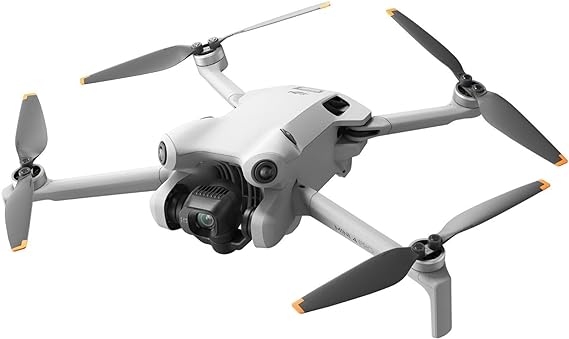
1: DJI Mini 4 Pro
Best Drone for Most Creators
Why We Picked It
The DJI Mini 4 Pro stands out as the most capable ultralight drone available. With a weight of just 249g (including the standard battery), it falls below the FAA registration requirement. The standard battery provides approximately 34 minutes of flight time, but users opting for the extended life battery can extend flights beyond 45 minutes, albeit with associated forms and fees. Boasting full 360-degree obstacle avoidance, automated flight modes, and a Quad Bayer camera capable of recording 4K60 HDR video, the drone offers an impressive array of features. Notably, the APAS function allows the drone to autonomously navigate through intricate spaces, even at low altitudes—an aspect we particularly appreciate.
Who It’s For
For those who’ve considered the Mini 3 but desire a little extra, the Mini 4 Pro proves to be a logical and worthwhile step-up option. This drone is an appealing choice for drone enthusiasts, cinematographers seeking an additional aerial B-camera, and creators willing to invest a bit more for intelligent obstacle avoidance features. Furthermore, it caters well to TikTok influencers by supporting vertical 9:16 video, making it a suitable and upgraded tool for a variety of content creators.
Pros
- Small, portable design
- 249g takeoff weight sidesteps registration requirements
- 4K60 video in SDR, HDR, or D-Log M
- Supports vertical video and upward camera tilt
- Two remote control options
Cons
- Doesn’t include AirSense transponder
- Extended battery option puts it above registration weight limit
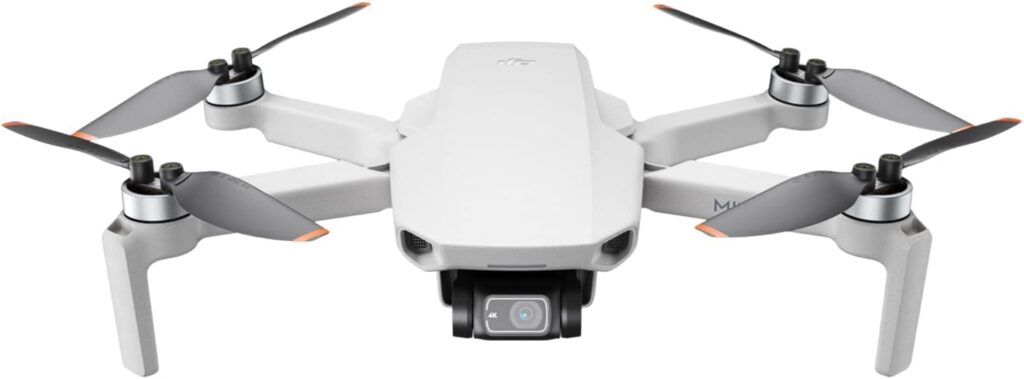
2: DJI Mini 2 SE
Best Entry-Level Drone
Why We Picked It
The DJI Mini 2 SE stands out as the top drone under $350. Equipped with a stabilized 2.7K video camera for 12MP photos, it also features GPS and Find My Drone functions. Its lightweight 249g takeoff weight exempts it from FAA registration, requiring only an online knowledge test for operation. With flight times approaching half an hour, stable performance up to its 400-foot altitude limit, and a dependable connection to the necessary smartphone app, the Mini 2 SE impresses. The only drawback is the absence of obstacle-detection sensors, a feature some users might miss.
Who It’s For
For beginners entering the drone scene with a focus on capturing exceptionally smooth 2.7K30 footage, the Mini 2 SE is the ideal choice. Additionally, photographers who prefer post-processing will appreciate the availability of raw format imaging, adding versatility to their aerial photography capabilities.
Pros
- Doesn’t require FAA registration
- Palm-sized, lightweight design
- Produces silky smooth 2.7K30 video
- Around 30 minutes of flying time per charge
- USB-C charging for drone and remote
Cons
- Omits obstacle detection and Hyperlapse features
- SDR video profile is limiting for some scenes

3: DJI Air 2S
Best for Photographers
Why We Picked It
The DJI Air 2S boasts a camera with an oversized Type 1 (1-inch) sensor, delivering significantly improved 20MP stills compared to the DJI Mini series drones. Offering support for 5.4K30 and 4K60 video with HDR, flat, or standard profiles, this drone also provides the flexibility to capture photos in Raw or JPG format. Alongside DJI’s robust safety features like GPS location, obstacle sensors, ADS-B for warning about nearby manned aircraft, and a commendable 30-minute battery life, the Air 2S stands out as a versatile and advanced option for aerial photography and videography.
Who It’s For
The Air 2S is an appealing choice for creators who prioritize still photography. While the Type 1 sensor might have a lower pixel count compared to Quad Bayer chips, it compensates with a broader dynamic range, providing photographers with greater flexibility in exposure edits. Video enthusiasts will also find merit in the 5.4K resolution and the availability of three profiles, though those seeking more advanced cinema capabilities may want to consider upgrading to a Mavic 3. It’s important to note that FAA registration is required for this drone.
Pros
- 1-inch sensor camera
- Video at up to 5.4K quality
- Robust safety features
- Obstacle detection and avoidance
- Automated camera shots
- HDR, Log, and Standard video profiles
- AirSense transponder
- Half-hour flight time
Cons
- Doesn’t offer in-camera filtered looks
- 8GB internal storage isn’t much
- Remote doesn’t include EV control wheel
- App-based editing limited to 1080p output
- HDR HLG workflow for pros only
- Raw images don’t transfer to smartphones and tablets automatically
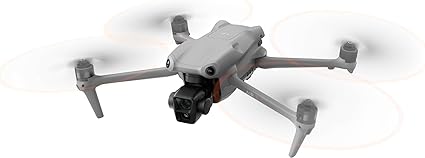
4: DJI Air 3
Best Obstacle Avoidance System
Why We Picked It
If you feel constrained by the single camera on the DJI Mini 4 Pro but aren’t willing to make a significant investment in the Mavic 3 Pro, the Air 3 serves as a middle-ground drone worth considering. Its picture quality is on par with the Mini 4 Pro’s primary camera, making the secondary camera the primary factor for considering an upgrade.
Who It’s For
If you find the single camera of the DJI Mini 4 Pro limiting but are hesitant to invest significantly in the Mavic 3 Pro, the Air 3 presents itself as a middle-ground drone worth considering. Its picture quality matches that of the Mini 4 Pro’s primary camera, making the secondary camera the primary reason for upgrading.
Pros
- Wide-angle and mid-telephoto camera stack
- Sharp 4K footage with standard, flat, or HDR color profiles
- Gimbal-stabilized cameras with 60-degree upward tilt
- All-around obstacle avoidance
- Hyperlapse, slow-motion, and waypoint flight features
- Long battery life
Cons
- Fixed-aperture lenses
- Requires FAA registration
- Meager 8GB of internal storage
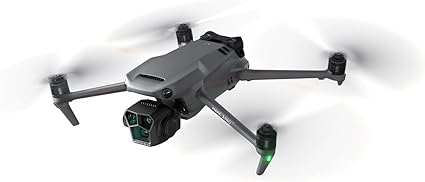
5: DJI Mavic 3 Pro
Best Drone for Pro Video and Cinema
Why We Picked It
The DJI Mavic 3 Pro features an impressive Four Thirds format sensor partnered with a Hasselblad color profile, delivering top-tier footage and stills without the need for additional adjustments. With comprehensive obstacle sensors, the drone adeptly navigates around obstructions, while integrated GPS ensures stable flight. With a testing duration revealing 35-minute flying times, safety during flights is enhanced. For film producers seeking additional capabilities, the Pro Cine edition, priced at $4,799, offers a 1TB SSD, ProRes 422 video support, and the RC Pro remote. Alternatively, the $1,599 Classic edition caters to those on a budget, excluding telephoto cameras and internal storage.
Who It’s For
The Mavic 3 Pro is well-suited for cinematographers, indie filmmakers, vloggers, and various creative professionals. While its weight necessitates FAA registration and an operator’s license for paid projects, its portability makes it convenient for on-location work, providing a versatile tool for capturing high-quality footage in diverse settings.
Pros
- Stabilized, triple-camera array
- Wide-angle Four Thirds camera with Hasselblad color
- Midrange 3x lens shows excellent picture quality
- Up to 5.1K30 or 4K120 video
- All-around obstacle sensors
- Includes a companion app and a remote with a built-in screen
Cons
- Base model has just 8GB of onboard storage
- Falls shy of promised 43-minute flight time
- Only the pricey Cine model supports ProRes
The Best Drones for Professionals
DJI has recently revamped its long-standing Inspire 2, introducing the Inspire 3 as its premier quad-rotor model designed specifically for cinema production. This upgraded drone is equipped with a full-frame, 8K camera that accommodates both DJI and Sony lenses and supports CinemaDNG and ProRes Raw recording. Notably, its bottom-mounted camera and retractable landing gear provide advantages, enabling more intricate camera and aircraft movements compared to drones with nose-mounted cameras.
For those seeking a smaller drone with high-end video capabilities, the Mavic 3 offers an appealing option. The Mavic 3, starting at $1,600 for the Classic edition and $2,200 for the Pro edition, supports 5.1K50 recording with a Four Thirds format camera in 10-bit HEVC. The Mavic 3 Pro Cine, priced at $4,799, stands out as a premium choice for cinematographers, featuring a triple camera stack and adding support for ProRes 422 HQ with a 1TB SSD for onboard storage. The Pro Cine justifies its cost with an upgraded video toolkit and the inclusion of the Pro RC remote.
For industry and enterprise applications, DJI offers Matrice drones, while Agras drones are tailored for agriculture purposes. Additionally, Sony’s Airpeak S1, with the capacity to carry larger cameras, presents a viable option and is comparable in size to the Inspire series, making it well-suited for on-location work.

